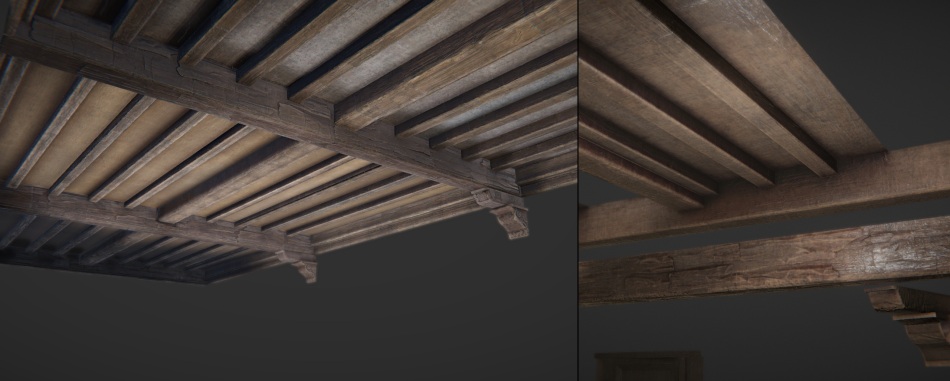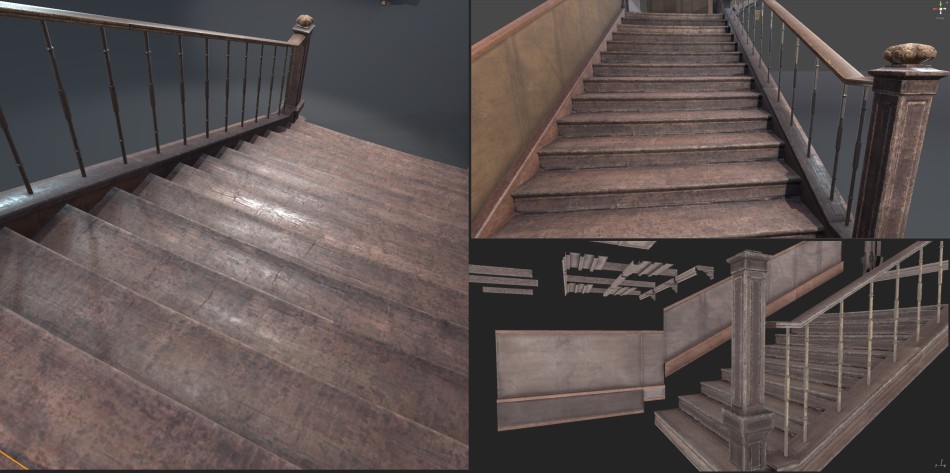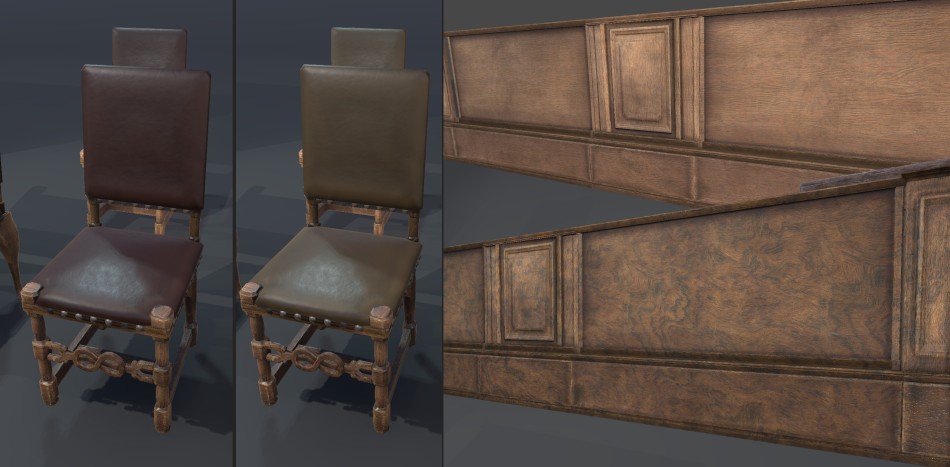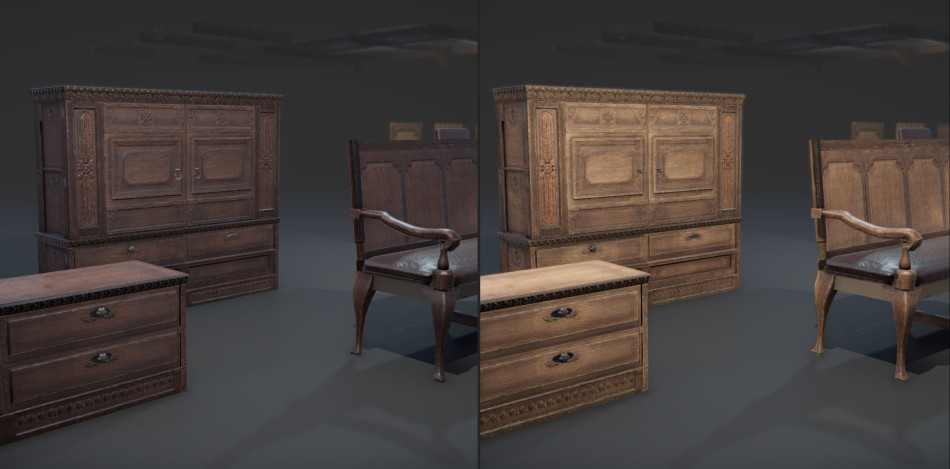Almighty window : Wood furniture set


These images are from a set of interior furniture models (mostly wood) for realtime render. Made for Rob Tuytel – Model Earth.
The goal with this set was to make efficient models: mostly in the use of textures, and for reuse and expansions of the set: this sort of elements are the basic decorations in interior spaces : chairs, tables, ceilings and wall paneling, they’re everywhere and need variation, but also most parts are basically sticks and panels of wood .. Still, there’s a big difference between just applying a tileable over a more or less refined model of a chair leg , and having a fully modelled hipoly baked and unique textures, with discolorations, dirts and edge effects.
But again it’s .. lots of wood sticks, so i .e. think 1 table : it’s simple, but if you expand the set to 5 types of tables, and armories, etc.. suddenly you realize you’ve dedicated unique texture space to dozens of very similar simple pieces.
I used 2 standard solutions : organizing and breaking down models into small parts, reusing them, keeping track of which are ‘original’ and having hi-polies for them, and making what’s possible modular in size (so a panel can be used both for walls waistcoting and as armory door panel)
This makes every single asset into a bunch of separated objects in Blender, but i keep working on my scripts so i can batch export them as a single mesh to Unity (welding, preparing uvs on 2nd channel for lightmap, keeping moving parts like drawers separate)
The 2nd solution is the use of a base map for dirts and shape-specific effects, and a tileable for the wood grain (possible in standard unity shader, like in the Blacksmith demo)
That also means the base map can use less texture space for some objects (i.e. a large flat wood panel ) and more for others (a detailed capitel with normal map details) While a 2nd uv has constant scale for mapping correctly a tileable wood grain and veineer.
The tileables were made from photo textures, but using also Substance : it was quicker for me to start from photo than procedural for nice wood veins patterns, but ‘packaging’ them as .sbs i could have 3 base types prepared , and in Unity, being able on the fly to still change colors, normal intensity, mixing flat and rough wood patterns.
So in the end you could have a table using the same leg model as a chair , but scaled and with a different tileable wood, making it look completely different, or if something special like a pendulum clock is needed, all the parts in common with a cupboard can be reused (maybe with a different tileable to hide the ‘modularity’ )





